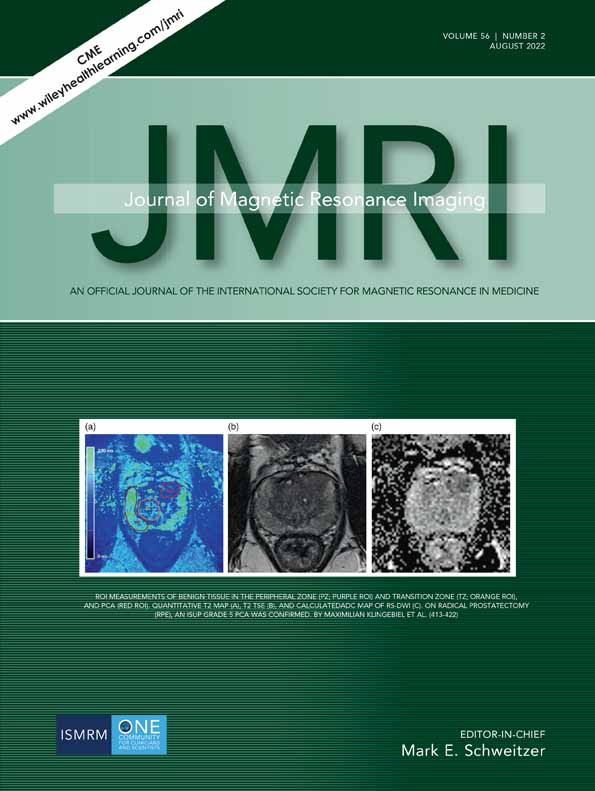Aortic Pulse Wave Velocity Evaluated by 4D Flow MRI Across the Adult Lifespan
Abstract
Background
Evaluation of aortic stiffness by pulse wave velocity (PWV) across the adult lifespan is needed to better understand normal aging in women and men.
Purpose
To characterize PWV in the thoracic aorta using 4D flow MRI in an age- and sex-stratified cohort of healthy adults.
Study Type
Retrospective.
Population
Ninety nine healthy participants (age: 46 ± 15 [19–79] years, 50% female), divided into young adults (<45 years) (N = 48), midlife (45–65 years) (N = 37), and later life (>65 years) (N = 14) groups.
Field Strength/Sequence
1.5 T or 3 T, 2D cine bSSFP, 4D flow MRI.
Assessment
Cardiac functional parameters of end-diastolic volume (EDV), end-systolic volume (ESV), stroke volume (SV) and myocardial mass were assessed by 2D cine bSSFP. PWV and aortic blood flow velocity were assessed by 4D flow MRI. Reproducibility of PWV was evaluated in a subset of nine participants.
Statistical Tests
Analysis of variance, Pearson's correlation coefficient (r), linear regression, intraclass correlation coefficient (ICC). A P value < 0.05 was considered statistically significant.
Results
PWV increased significantly with age (young adults: 5.4 ± 0.9 m/sec, midlife: 7.2 ± 1.1 m/sec, and later life: 9.4 ± 1.8 m/sec) (r = 0.79, slope = 0.09 m/sec/year). PWV did not differ in women and men in entire sample (P = 0.40) or within age groups (young adults: P = 0.83, midlife: P = 0.17, and later life: P = 0.96). PWV was significantly correlated with EDV (r = −0.29), ESV (r = −0.23), SV (r = −0.28), myocardial mass (r = 0.21), and mean aortic blood flow velocity (r = −0.62). In the test–retest subgroup (N = 9), PWV was 6.7 ± 1.5 [4.4–9.3] m/sec and ICC = 0.75.
Data Conclusion
4D flow MRI quantified higher aortic PWV with age, by approximately 1 m/sec per decade, and significant differences between young adults, midlife and later life. Reproducibility analysis showed good test–retest agreement. Increased PWV was associated with decline in cardiac function and reduced aortic blood flow velocity. This study demonstrates the utility of 4D flow MRI-derived aortic PWV for studying aging.
Evidence Level
2
Technical Efficacy
Stage 2




